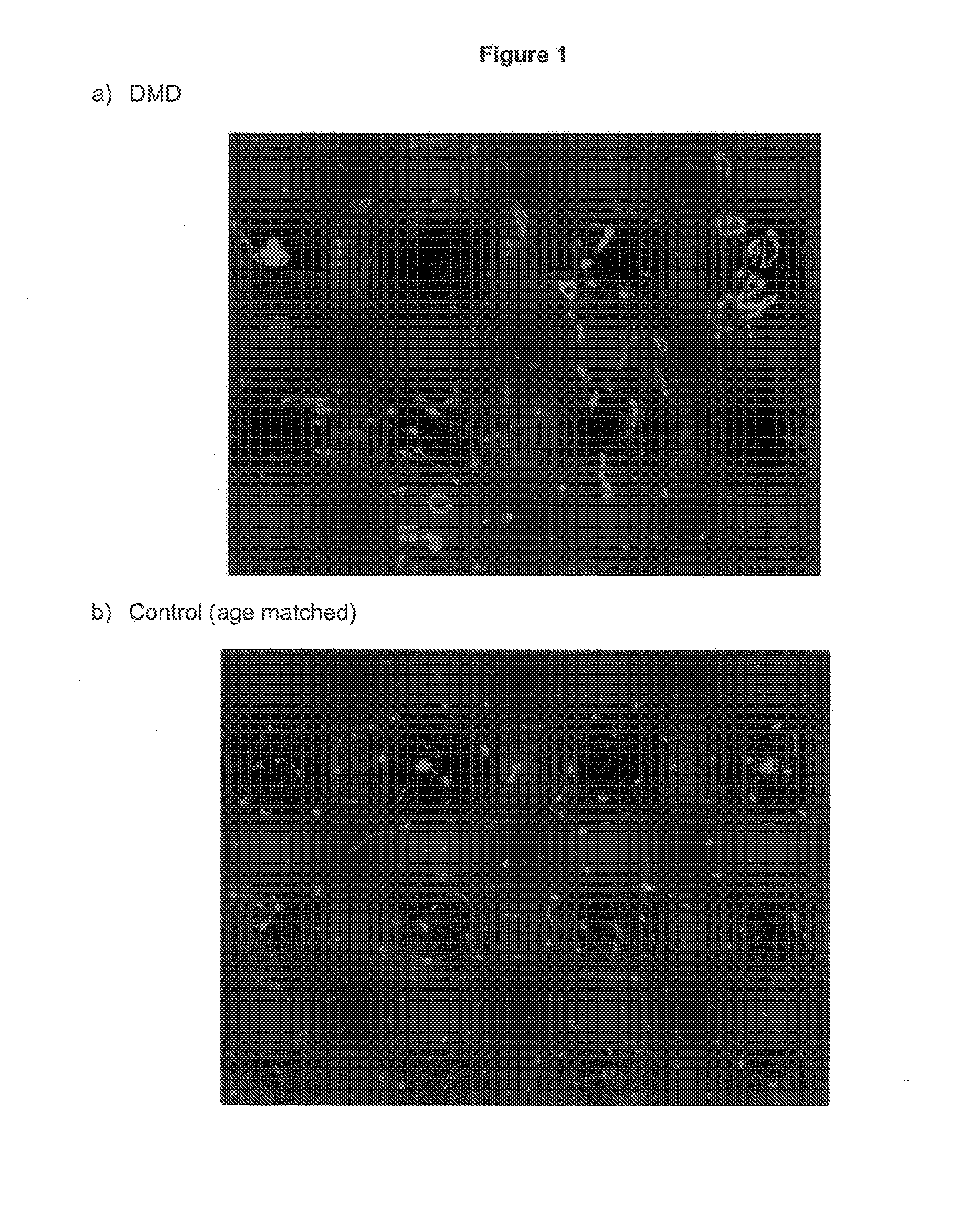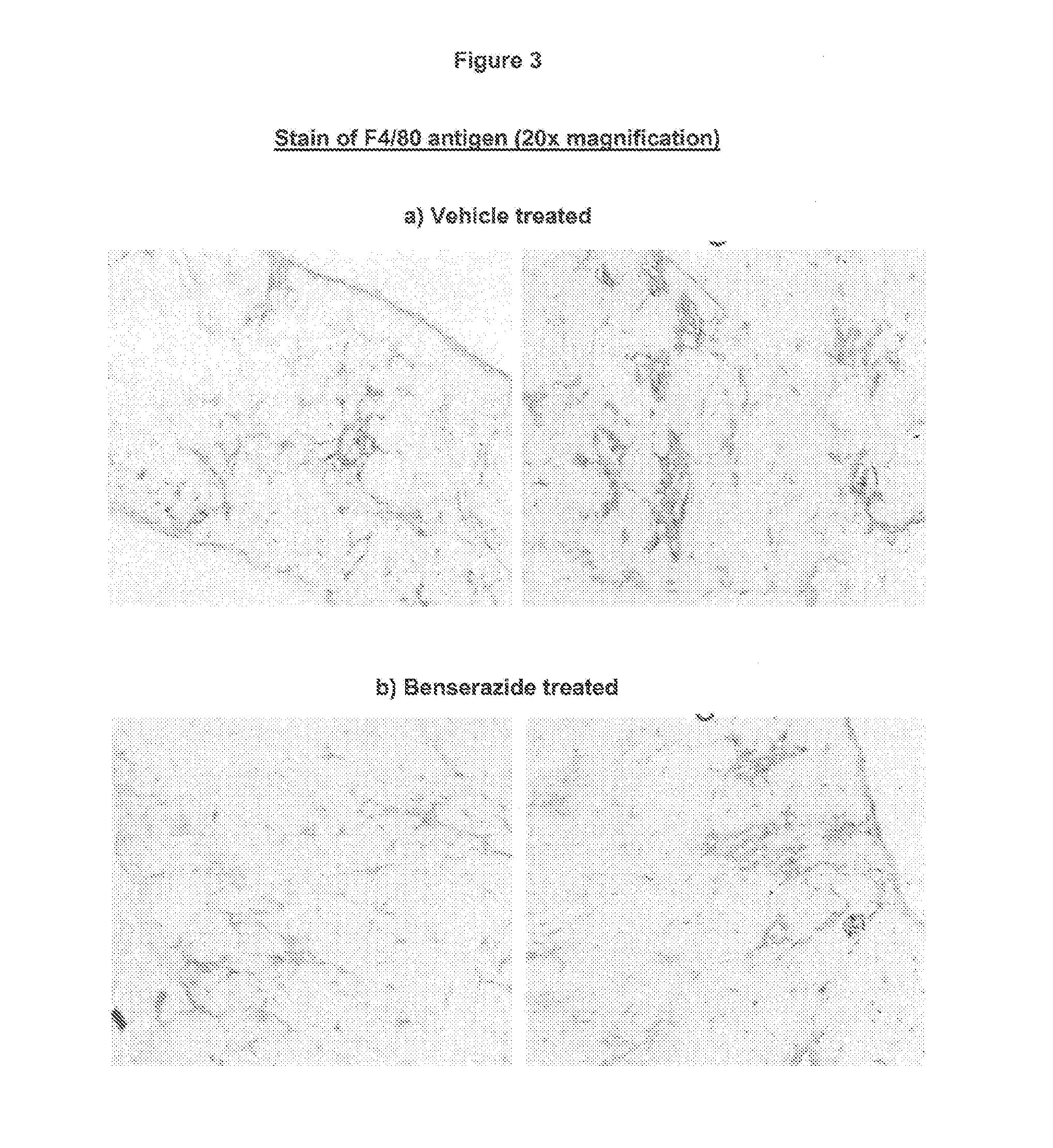New therapeutic uses of enzyme inhibitors
a technology of enzyme inhibitors and inhibitors, which is applied in the direction of biocide, drug composition, muscular disorder, etc., can solve the problems of insufficient tissue repair, cell death, and weakening of sarcolemma, and achieve the defects of cell attachment to the extracellular matrix
- Summary
- Abstract
- Description
- Claims
- Application Information
AI Technical Summary
Benefits of technology
Problems solved by technology
Method used
Image
Examples
example 1
[0045]Studies in to the overexpression of VAP-1 in dystrophic muscle tissue are on-going in tissue sections derived from patients with muscular dystrophy.
[0046]In these on-going studies, the increased expression of VAP-1 in the tissue section (detected with a goat anti-human VAP-1 antibody (Everest) followed by Cy3 labelled anti-goat IgG and imaged using a confocal microscope) and a monoclonal rat anti mouse antibody followed by a Cy3 labelled anti-rat antibody is revealed when compared to non-dystrophic control tissue.
[0047]In further on-going experiments the effect of VAP-1 / SSAO inhibitors including carbidopa is being examined in the mdx and dy / dy mouse models of muscular dystrophy. In these models groups of mice were dosed once per day with carbidopa (25 mg / kg p.o.) for up to 12 weeks. The degree of inflammation and fibrosis in the muscle was then examined.
example 2
VAP-1 Expression is Increased in the Muscle of a Patient with Duchenne Muscular Dystrophy (DMD)
[0048]The expression of VAP-1 in a muscle tissue section of a boy with Duchenne Muscular Dystrophy (DMD) was compared with VAP-1 expression in a muscle tissue section of an age-matched boy with normal muscles as a control. VAP-1 expression was detected with a monoclonal rat anti-mouse VAP-1 antibody, followed by a Cy3-labelled anti-rat IgG antibody, and imaged using a confocal microscope. The results are shown in FIG. 1.
[0049]FIG. 1(a) shows VAP-1 expression in the DMD tissue section, and FIG. 1(b) shows VAP-1 expression in the age-matched control. VAP-1 expression is greatly increased in the DMD tissue section.
example 3
Effect of the VAP-1 Inhibitor Benserazide on Diaphragm Muscle in a Mouse Model of Muscular Dystrophy
[0050]Duchenne muscular dystrophy (DMD) is an X-linked muscle disease. Patients develop progressive weakness of skeletal and respiratory muscles and dilated cardiomyopathy. Clinical onset is usually between 2 and 5 years of age. Most patients loose independent ambulation in their teens, after which scoliosis develops. Death usually occurs before forty years of age and is most often the result of respiratory or cardiac failure. The biochemical cause of DMD is a severe deficiency of dystrophin, an essential component of the sarcolemmal dystrophin-associated glycoprotein complex. When complex assembly is disturbed, the linkage between the muscle cell's cytoskeleton and the extracellular matrix is compromised, leading to sarcolemmal instability and increased vulnerability to mechanical stress. Fibres undergo necrosis by excessive Ca2+ influx and are progressively replaced by connective an...
PUM
 Login to View More
Login to View More Abstract
Description
Claims
Application Information
 Login to View More
Login to View More - R&D
- Intellectual Property
- Life Sciences
- Materials
- Tech Scout
- Unparalleled Data Quality
- Higher Quality Content
- 60% Fewer Hallucinations
Browse by: Latest US Patents, China's latest patents, Technical Efficacy Thesaurus, Application Domain, Technology Topic, Popular Technical Reports.
© 2025 PatSnap. All rights reserved.Legal|Privacy policy|Modern Slavery Act Transparency Statement|Sitemap|About US| Contact US: help@patsnap.com



